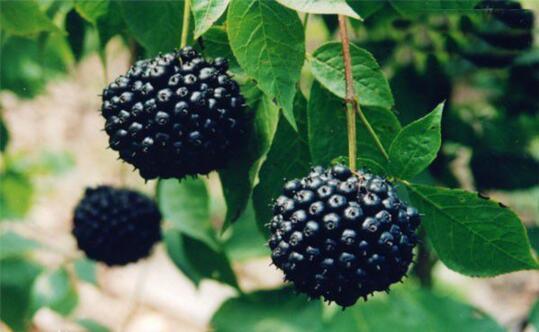Acanthopanax senticosus (Latin scientific name: Acanthopanax senticosus (Rupr. Maxim.) Harms), aliases: Kanguaibangzi, Huqiu, 100 needles. Shrubs, 1-6 meters high; many branches. Leaves have small leaves 5, sparse 3; petioles are often sparsely thorny, small leaves are papery, elliptical obovate or oblong, apex acuminate, base broad and wedge-shaped, rough on the top, dark green, coarse hairs on the veins, light green below , With pubescence on the veins and sharp heavy serrations on the edges; petiole with brown pubescence. Umbells are single terminal, with many flowers; total peduncle glabrous, pedicel glabrous or slightly hairy at base; flowers purple-yellow; calyx glabrous; petals ovate; ovary 5-chamber, all styles connate into columnar. The fruit is spherical or ovoid. Flowering period from June to July, fruiting period from August to October.
Distributed in China's Heilongjiang, Jilin, Liaoning, Hebei and Shanxi. Born in hillside forests and roadside shrubs; medicine gardens are often cultivated.
Root bark dispels rheumatism, strengthens muscles and bones, soaks in wine to make Wujiapi wine (or make Wujiapi powder). Root bark contains volatile oil, tannins, palmitic acid, linoleic acid, vitamin A and B1. The root bark can also be used as a substitute for "Acanthopanax bark" for medicinal purposes; the seeds can be used to squeeze oil and make soap.




